Note: The information in this essay was gathered in part with my intermediate and somewhat dubious Spanish language skills. I’ve been unable to reach Rodrigo Otero for clarifications and corrections, but will update the essay when possible.
On a crisp March morning, I walked across the Rio Manzanares and up Calle Imperial before turning onto the charming and shady Calle de Segovia. It is one of Madrid’s old Hapsburg streets, and it backs up the royal palace and gardens. Just before you reach the shop, you travel under the graceful arches of a viaduct.
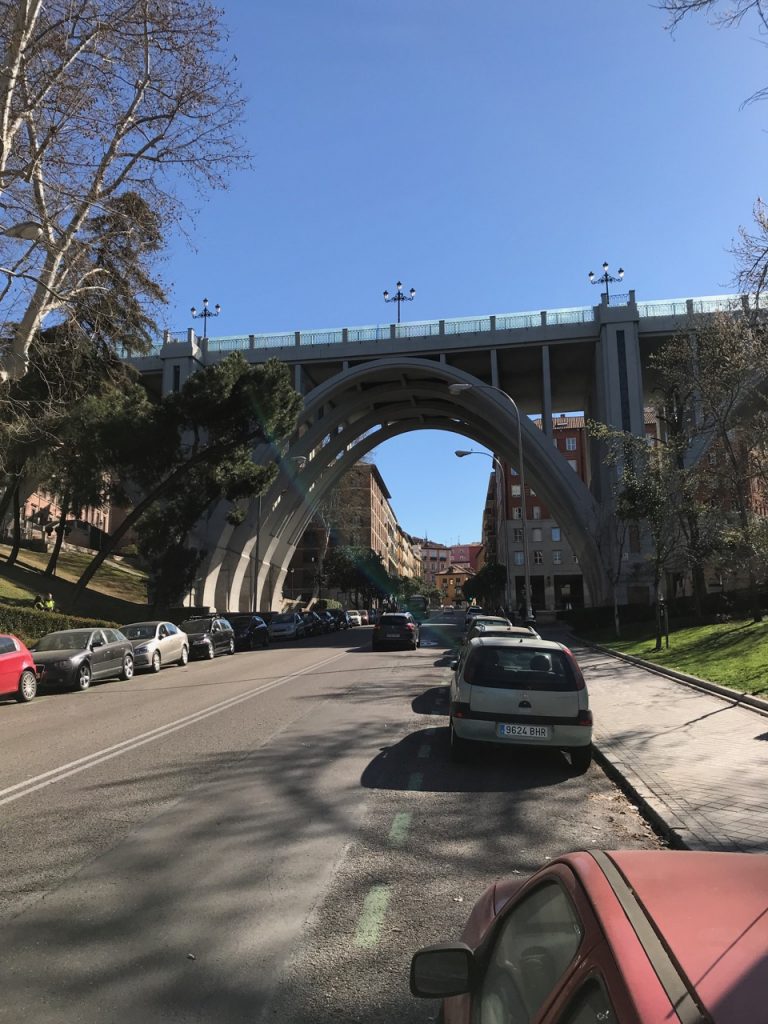
Because of my daughter Zoë’s friends in the Madrid cycling community, I had an appointment to visit Ciclos Otero, Madrid’s oldest bicycle shop, founded in 1927. Even from the outside, I had a feeling I was going to like the shop. It had ironwork on the windows and posters advertising the 2018 “La Clásica Otero,” a vintage cycling event paying homage to legendary Spanish climber Federico Bahamontes.

My tour guide was Rodrigo Otero himself, grandson to master frame builder and cyclist Enrique Otero. Affable, funny, and generous, Rodrigo bears a striking resemblance to the American actor Adam Driver (Frances Ha, Girls). We communicated in a mix of Spanish and English, laughing and switching languages when we got stuck.
The bottom floor of the building is a regular bike shop servicing modern and vintage bikes. Two mechanics, a master and apprentice, were in the shop early building bikes. Rodrigo was working on a fleet of trikes being donated to a children’s hospital. Each trike had a post for hanging an IV bag. Although Rodrigo was clearly busy, he gave stopped everything and gave me the full tour. It was a lot to see, exceeding all my expectations.
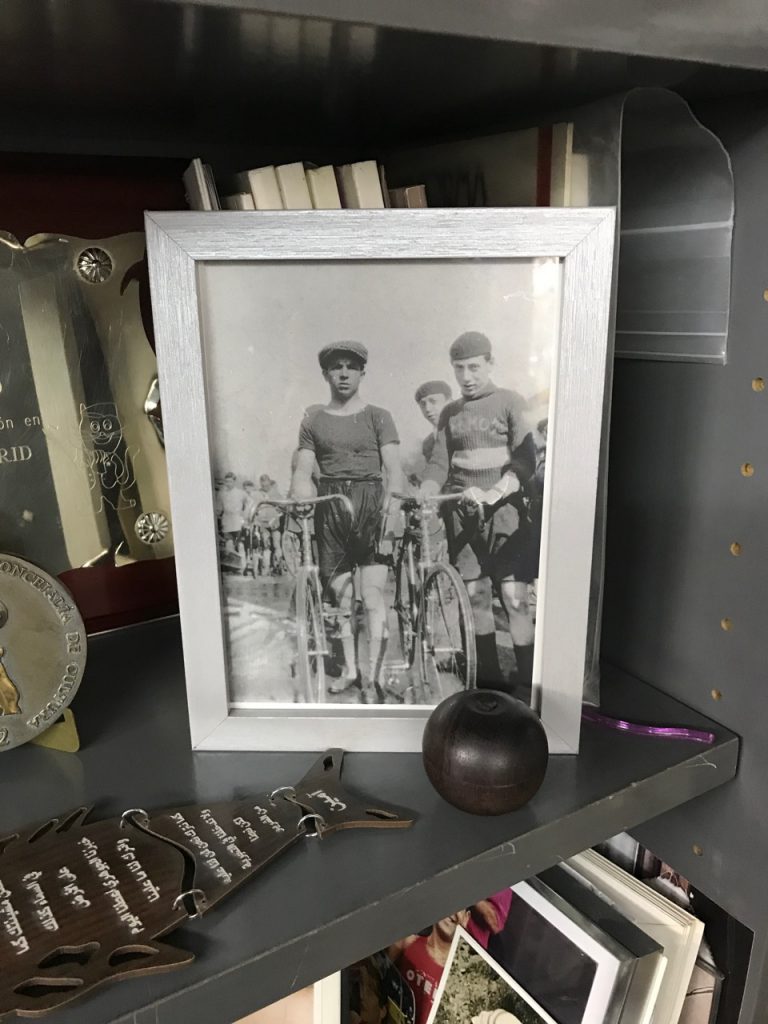
After a brief stop in an office filled with cycling memorabilia including signed photos of Bahamontes, Julio Jimenez, Miguel Indurain and about every other Spanish cycling star you can think of, we climbed the stairs to the second story. The second floor of the shop is suspended over the first with steel grates, so you can look down below.
One of the first things you see is after coming up the stairs is the Olympic torch from the 1992 Barcelona games. Built by Otero, it was the first torch designed to be carried by bicycle. Next to the torch is a big photo of Indurain carrying the torch. Then you cast your eyes around, and see a display of over 50 bicycles, grouped by decade in clusters of 3-8 bikes. From the very earliest 1930s Oteros, equipped with wooden rims and cork brake pads, to sleek time trail bikes from the 1990s.

In my travels to Spain over the last five years, I’ve learned more about how recently Spain transitioned to a stable democracy (some Spaniards would say they are still in transition) and how fresh the turmoil of the Civil War and Franco’s reign is in people’s memories. Politics is still a sensitive subject, with some families divided by old civil war allegiances to right-leaning (Nationalists) and left -leaning (Republicans).
The Otero shop survived both the Spanish Civil War, and later in the 1970s, an ETA (Basque separatist) bombing that severely damaged the building. The Spanish political dichotomy is on display in one corner of the shop. On left side of the wall, a black and white photo from the 1930s of a group Spanish Republican (leftists) cyclists, including Enrique Otero. On the right side of the corner, there is a large color photograph of Spanish King Juan Carlos I, standing behind a custom Otero (from the 1970s) built for him. Rodrigo explained, “my grandfather always said, to run a business in Spain, you need both the left and the right.”
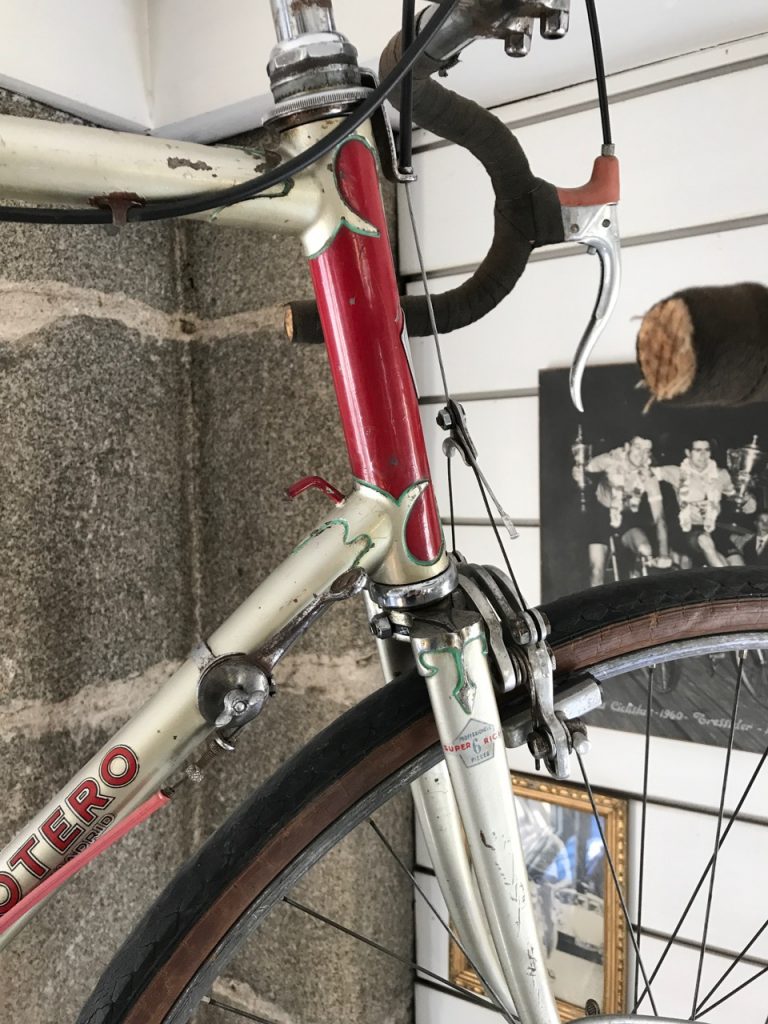
I’ve seen many excellent bicycle collections, but the Otero shop didn’t let me down in the least—it seemed to me that much of Spanish cycling history was contained within its walls. One surprise for me was Enrique Otero’s early embrace of cyclotouring. Perhaps, as Rodrigo explained, it was because his grandfather was a cycling enthusiast, rather than a professional racer. One of the early bikes on display is a wonderful box-lined tandem with a child seat mounted on the bike. On the wall next to the tandem, is a photo of Rodrigo’s grandfather, grandmother, and father on the bike.

Rodrigo pointed out a line drawing of Enrique, relaxing under a tree with his touring bike next to him in Madrid’s Casa de Campo. Casa de Campo, once a royal hunting ground and forest, is now the largest park in Madrid (6.8 square miles) and is a favorite car-free cycling spot for madrileños. Casa de Campo was also the front lines of the Spanish Civil War during the Siege of Madrid in 1936. Rodrigo explained that his grandfather was instrumental in converting the park into a public space.
Since this is a bicycle blog, I want to talk a little about the unusual construction details on the Otero frames. One distinctive detail on many of the early Otero frames was a pronounced spear point detail on the fork crown. Until my visit, I was also unaware of that Otero produced randonneur style bicycles contemporaneously with French builders such as Herse and Singer. I was particularly taken by the display of rando-style bikes form the 1950s and 1960s. They featured very elegant and skinny seat stays—perhaps the smallest diameter seat stays I’ve ever seen on any bicycle. Most of these rando bicycles were built with “Super 6 Rick Professionell” tubing—which I had never heard of or seen before.
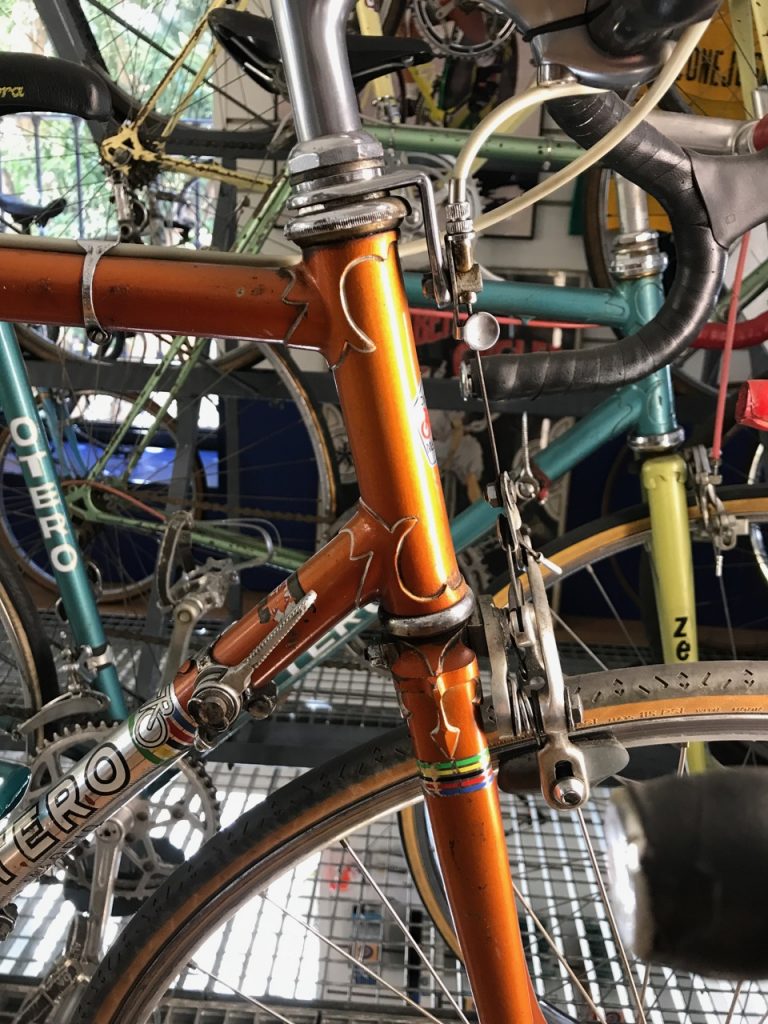
Another bike that caught my eye was an early track bike used by Bahamontes (who, Rodrigo pointed out, did not like track racing) and other professionals. The silver and red frame sported a custom adjustable track stem, beautiful Prior high flange hubs and head tube cut outs. It also had the very skinny seat stays.

Other eye-catching bikes included gleaming chromoveloto finishes and a short-wheel base curved seat tube design from the 1980s that Rodrigo described as their “Pentax” design for climbing and time trails.
My visit to Otero has got me thinking about Spanish history, and bicycles, and touring and racing. I am grateful to Rodrigo for sharing with me his family’s history as both cyclists and citizens of Madrid. I look forward to returning, perhaps for the 2019 edition of La Clásica Otero in September, which will pay tribute to Spanish women cyclists. It would be fun to do the ride on an Otero—so all I need to find is a clean 1950s or 60s Otero randonneur bike in a 62cm size. How hard can it be?

I left the shop with an Otero cycling cap, a Julio Jimenez postcard, and a wide smile. My morning at Otero is one I won’t soon forget.
More photos of Ciclos Otero (courtesy Michael Haddad of Brooklyn, NY) are viewable here: https://www.flickr.com/photos/44541835@N08/albums/72157711426041406




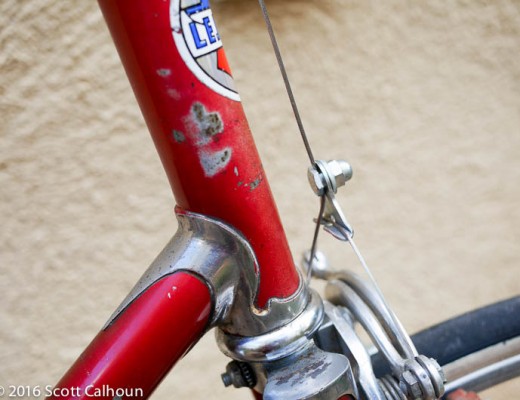
1 Comment
Michael Haddad
October 25, 2019 at 6:58 pmWonderful story! Thanks for filling in the blank spots from the tour of the shop that I got from Rodrigo – in Spanish only.